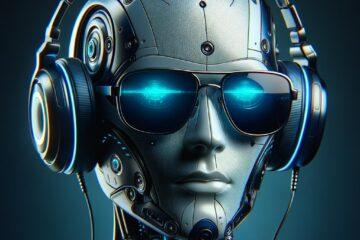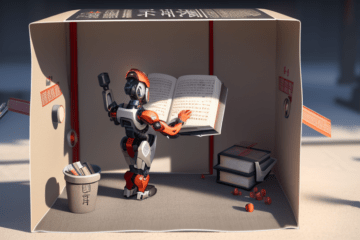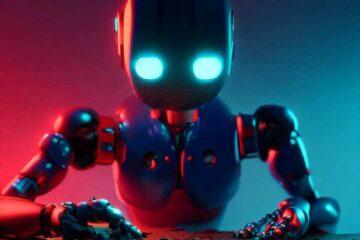From Steam to Silicon
Published by Blog Editor on
From Steam to Silicon
A comparison of the Industrial Revolution with the AI Revolution
This is a comparison of the AI revolution and the Industrial Revolution. The Industrial Revolution of the 18th and 19th centuries was a period of profound technological change that transformed the world. It marked the transition from manual labor to machine-based manufacturing, and it created massive new industries, changed the way we live, and reshaped the global economy.
Today, we’re in the midst of another technological revolution. The AI Revolution is changing the way we work, the way we think, and the way we live. Just as the Industrial Revolution transformed society, the AI Revolution is doing the same.
But with every revolution comes disruption, and the AI Revolution is no different. As machines and algorithms take on more tasks that were once done by humans, some jobs are disappearing. And just like during the Industrial Revolution, people are protesting.
But just like during the Industrial Revolution, new jobs are being created as old ones disappear. The rise of the machines is creating a demand for workers who can build, program, and maintain them. And as AI technology becomes more ubiquitous, new industries are emerging, creating opportunities for entrepreneurs and innovators.
Of course, just like during the Industrial Revolution, there are winners and losers in the AI Revolution. Some people and companies are benefiting greatly from the new technology, while others are being left behind. But overall, the AI Revolution is driving economic growth and changing the way we live and work.
The Industrial Revolution and the AI Revolution have a lot in common. Both have brought about massive change and disruption, and both have created winners and losers. But one thing is for sure: the AI Revolution is here to stay, and it will continue to transform our world in ways we can’t yet imagine.
One of the similarities between the Industrial Revolution and the AI Revolution is the impact they have had on the way we work. During the Industrial Revolution, machines took over many of the physical tasks that were once done by humans, making work less physically demanding. This led to the rise of sedentary jobs and a more sedentary lifestyle for many people.
Similarly, the AI Revolution is changing the nature of work, making it less mentally demanding in some ways. As machines and algorithms take on more of the cognitive tasks that were once done by humans, there is a risk that we will become too reliant on technology and lose some of our mental agility.
In fact, some experts have warned that the AI Revolution could lead to cognitive decline, as we become too lazy to think for ourselves. This is a concern that is shared by many, as we rely more and more on technology to do things for us.
However, there are also some differences between the two revolutions. Unlike the Industrial Revolution, which saw a shift from rural to urban areas, the AI Revolution is enabling more people to work remotely, from anywhere in the world. This is creating new opportunities for people in rural and remote areas, and it’s changing the way we think about work and the workplace.
Additionally, the AI Revolution is also creating new opportunities for collaboration and innovation. As machines and algorithms take on more of the routine tasks that were once done by humans, people are freed up to focus on more creative and strategic work. This is leading to new breakthroughs in science, medicine, and technology, and it’s helping us to tackle some of the biggest challenges facing humanity.
Ultimately, whether the AI Revolution will lead to cognitive decline or not remains to be seen. What is clear is that, like the Industrial Revolution, it is transforming our world in profound ways. And just like during the Industrial Revolution, there will be winners and losers, but overall, the benefits are likely to outweigh the costs. As we embrace the AI Revolution, we must also be mindful of its impact on our health, our society, and our planet, and work to ensure that it benefits everyone.
While the AI Revolution is creating new opportunities for creativity and innovation, it’s important to acknowledge that not everyone has the same capacity for creative work. As with any workforce, the distribution of intelligence is Gaussian, meaning that some people are more capable of creative and strategic work than others.
Additionally, while the AI Revolution is creating new jobs, it’s also eliminating many of the menial jobs that were once done by humans. The question is, do the number of new jobs created add up to the number of jobs lost?
The answer is not straightforward, as the impact of the AI Revolution on the job market is complex and multifaceted. While some jobs are being eliminated, others are being created, and the nature of work is changing in ways that we are only beginning to understand.
Furthermore, the AI Revolution is not without its potential negative impacts on society. As machines and algorithms become more capable of performing complex tasks, there is a risk that they will displace humans in many areas of work. This could lead to rising unemployment and economic inequality, and it could also exacerbate existing social and political divisions.
Additionally, the increasing reliance on technology and the erosion of personal privacy and autonomy could have negative consequences for our social and psychological well-being. As we become more connected to machines and less connected to each other, we may lose some of the human qualities that make us who we are.
However, it’s important to remember that the impact of the AI Revolution on society is not predetermined. While there are potential negative consequences, there are also opportunities for positive change and progress. It’s up to us to shape the future we want, and to ensure that the benefits of the AI Revolution are shared by all. By embracing the potential of AI while being mindful of its impact, we can create a future that is both prosperous and just.
Unfortunately, the future is often determined by capitalistic aims and not by considerations of human rights and ideals. Capitalism tends to favor those with the most resources, and as the AI Revolution continues, we may see the emergence of a new form of monopoly, in which a small number of powerful actors control the development and distribution of AI.
This could have significant consequences for society, as the interests of these powerful actors may not align with those of the broader population. In a world where the AI Revolution is driven primarily by profit, we may see the emergence of a new kind of singularity, in which the strongest and most powerful entities dominate the market and control the development of AI.
This could lead to a future that is less like Star Trek and more like a dystopia, such as the one depicted in the film Blade Runner. In such a future, the benefits of AI may be concentrated in the hands of a few, while the broader population is left to suffer the consequences of automation and economic inequality.
However, it’s important to remember that the future is not predetermined. By engaging in critical dialogue and advocacy, we can shape the development of AI and ensure that it aligns with our values and aspirations as a society. Only by working together can we build a future that is just, equitable, and truly inclusive.
Please also watch the videos for AI in Health Care, Explainable AI and Artificial General Intelligence.


